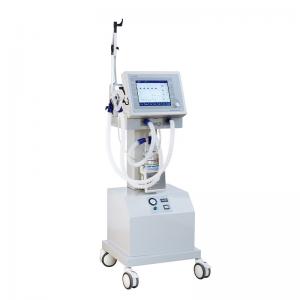

Add to Cart
Introduction:
Respirators, also known as breathing machines or ventilators, are
medical devices designed to assist individuals in breathing when
they are unable to do so adequately on their own. These devices
play a critical role in supporting patients with respiratory
illnesses, providing them with the necessary oxygen and helping
remove carbon dioxide from their lungs. This article aims to
provide an overview of respirators, their types, and their
importance in medical care.
Types of Respirators:
Non-Invasive Positive Pressure Ventilation (NIPPV): This type of respirator delivers pressurized air or oxygen through a mask, nasal prongs, or a helmet, without the need for invasive procedures. NIPPV is commonly used for conditions such as sleep apnea, chronic obstructive pulmonary disease (COPD), or acute respiratory distress syndrome (ARDS).
Invasive Mechanical Ventilation: Invasive ventilators involve the insertion of a tube into the patient's airway, typically through the mouth or nose, or a tracheostomy. This method allows for precise control of the airway and is often used for patients with severe respiratory failure, anesthesia during surgery, or those in intensive care units.
Key Components:
Ventilator Unit: This is the main device that delivers the airflow and oxygen mixture. It consists of a control panel, sensors, and various settings that can be adjusted based on the patient's needs.
Breathing Circuit: The breathing circuit connects the patient to the ventilator unit. It includes tubing, filters, and valves that regulate the flow of air or oxygen to the patient and the removal of exhaled gases.
Interfaces: Interfaces are the means through which the patient interacts with the respirator. These can be masks, nasal prongs, or helmets, depending on the specific type of ventilation being used.
Importance in Medical Care:
Respirators are essential in providing life-saving support for
patients with respiratory failure or compromised lung function.
They assist in maintaining adequate oxygen levels, removing carbon
dioxide, and reducing the workload on the patient's respiratory
muscles. Respirators are widely used in emergency medicine,
critical care units, operating rooms, and long-term care
facilities.
Conclusion:
Respirators are crucial medical devices that aid in the management
of respiratory conditions and provide life-sustaining support. With
various types available, they can be tailored to meet the specific
needs of patients, whether for short-term assistance or long-term
care. The continuous advancements in respiratory technology
continue to improve patient outcomes and enhance the quality of
medical care provided.
Specification:
| ● Display: 10.4 inch high visibility color TFT display ● Ventilation Mode: SIPPV, IPPV, SIMV, PSIMV, PSV, CPAP, PCV ● Minute Volume: Greater than or equal to 18L ● Back~up Power Supply: At least 4 hours ● Tidal Volume: Adjustable range: 20~1500ml, Display range: 0~2000ml ● Respiratory Rate: 1~99bpm ● Inspiratory/expiratory (I:E) ratio: 4:1~1:4 ● PEEP: 0~10cmH2O ● SIMV Rate: 1~20bpm ● Inspiratory Pressure Trigger: ~10~10cmH2O ● Trigger Sensitivity (flow): 1~10L/m ● Inspiratory Plateau: Adjustable from 0~50% of inspiratory time ● Adjustable Oxygen Concentration: 21~100% ● Gas Supply Requirement: 280~600 kPa medical grade oxygen and compressed air supply ● Pressure Limit: 1.0kPa~6.0kPa ● Maximum Safe Operating Pressure:≤6.0kPa ● Tidal Volume Alarm: Upper Limit: 10~2000ml, Lower Limit: 0~1800ml ● Airway Pressure Alarm:Upper Limit: 0.1~6kPa, Lower Limit: 0~5kPa ● Oxygen Concentration Alarm:Upper Limit: 22~100%, Lower Limit: 21~80% ● Air compressor PN~3000 |
